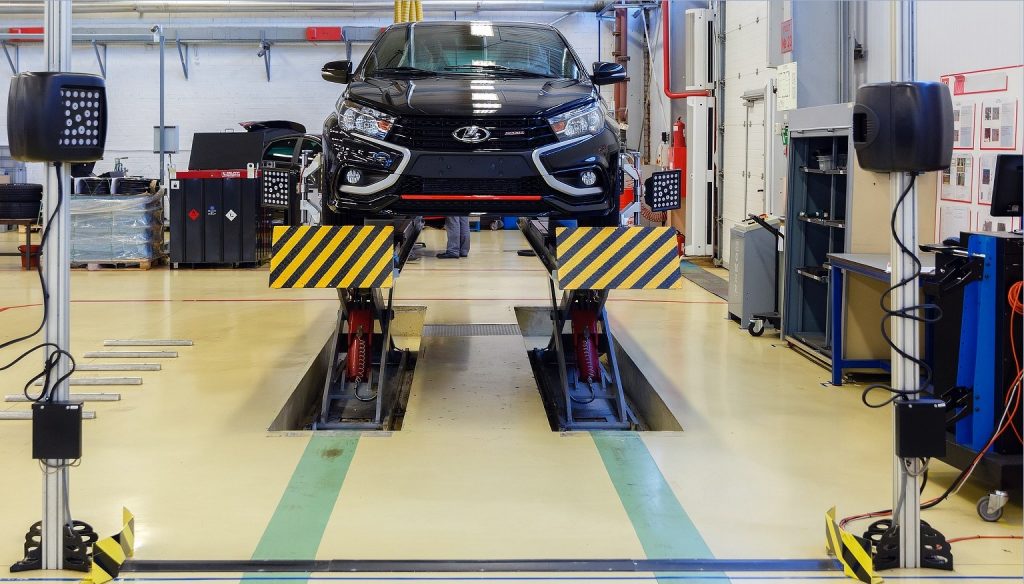A Complete Guide to Wheel Alignment (Part 2)
This post is a continuation of Part 1 on A Complete Guide to Wheel Alignment. Lately, we have gone through
1. Car Alignment: Open or Pinched
2. Wheel Alignment Adjustments and Constraints
2.1 Front Wheel Alignment
2.2 Rear Wheels: Consequences of Parallelism
2.3 Difference Between Traction and Propulsion
We will now cover:
3. Car Alignment: A Notion of Compromise
4. Causes of the Wrong Alignment of Your Car
5. Wrong Car Parallelism: What Are the Consequences?
3. Car Alignment: A Notion of Compromise

For all the reasons mentioned in Part 1: 2.3 Difference Between Traction and Propulsion, common settings have been established on consumer vehicles to correct each technology’s inherent characteristics.
In this way, a vehicle will have the most neutral parallelism possible when driving. However, each correction has its drawbacks; there is no perfect choice:
– For traction, parallelism slightly open at the front counteracts the tendency to accelerate. It makes the vehicle more directional, which is necessary due to the engine’s weight and transmission at the front. At the rear, the wheels are slightly pinched for added stability.
– For rear-wheel drive, it’s a matter of countering the effects of acceleration: the rear will be opened, the front slightly pinched to maintain stability when braking.
– A 4-wheel drive vehicle has the properties of both types (propulsion and traction), but the settings can be very different because of the possible uses (city, road, or crossing). These specificities will have to be considered because although they have the same transmission scheme, an SUV will have a very different setting than a supersport GT. In this case, please refer to the manufacturer’s data. A professional garage will usually have these data on their wheel alignment machines.
Good to know: beyond these characteristics, you should know that the alignment must also be modified because of other geometry settings – in particular, the camber (which is not, however, a setting accessible to all vehicles).
4. Causes of the Wrong Alignment of Your Car
The difference in parallelism is subtle in the conventional use of your vehicle. Unlike on a racetrack, alterations in behavior can go unnoticed.
In addition to the wear of the suspension and steering structures, the parallelism of an axle can be altered by these events:
– rolling vibrations;
– unbalanced tire;
– indelicate towing / troubleshooting;
– the difference in inflation between the two tires of the same axle (thus modifying the suspension geometry);
– shocks (pothole, sidewalk…);
– repeated and asymmetrical forces (roundabouts);
– off-road crossing, etc.
5. What Are the Consequences of the Wrong Car Alignment?
In the short term, asymmetrical parallelism can cause an increase in fuel consumption, steering discomfort such as the feeling of being swept to the right or left (the car is said to “pull” to the side), the steering wheel may move from its horizontal neutral position while you are driving straight, or the vehicle no longer corresponds to your daily driving habits.
In the long term, the tires will wear faster and asymmetrically, the mechanical components of the ground and steering will be subjected to additional stress. They will, therefore, last less than expected.
In any case, the long-term effects here are mechanical repercussions that are relatively difficult to quantify except for the tires. Premature wear can be as much as 20 or 30%, meaning that a tire can reach its legal limit on an outer or inner tread while the rest of the structure is only two-thirds worn.
Caution: The wrong alignment can also cause the stabilizers and rack end to cut off from the wheel!
Conclusion
For all these reasons, it is advisable to regularly check the alignment and overall geometry (if the vehicle allows it) at a professional auto repair and maintenance shop. The technical inspection is a good reminder, but do not hesitate to do it proactively after a major impact on one of the axles or if your vehicle behaves unusually.





One thought on “A Complete Guide to Wheel Alignment (Part 2)”